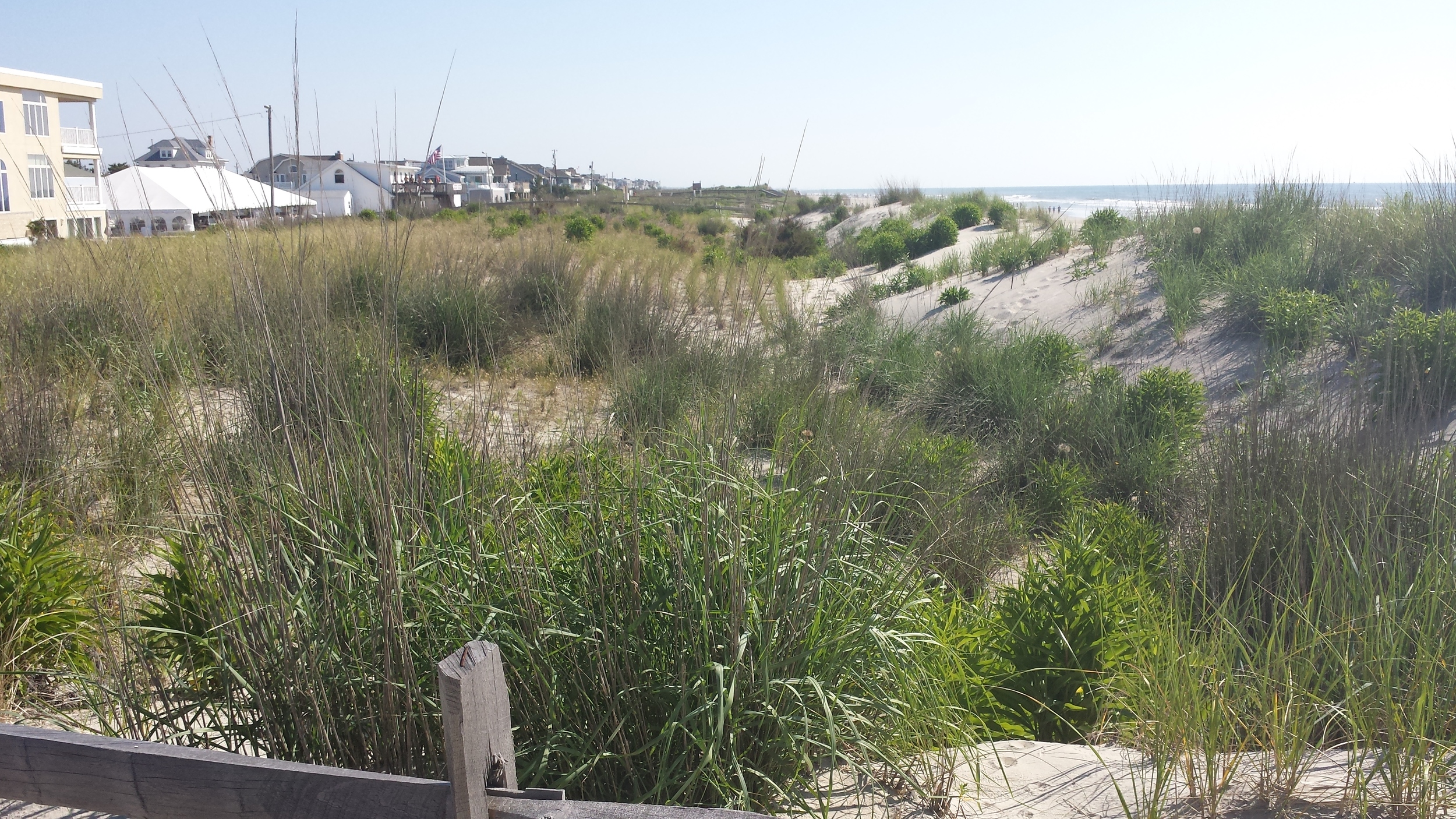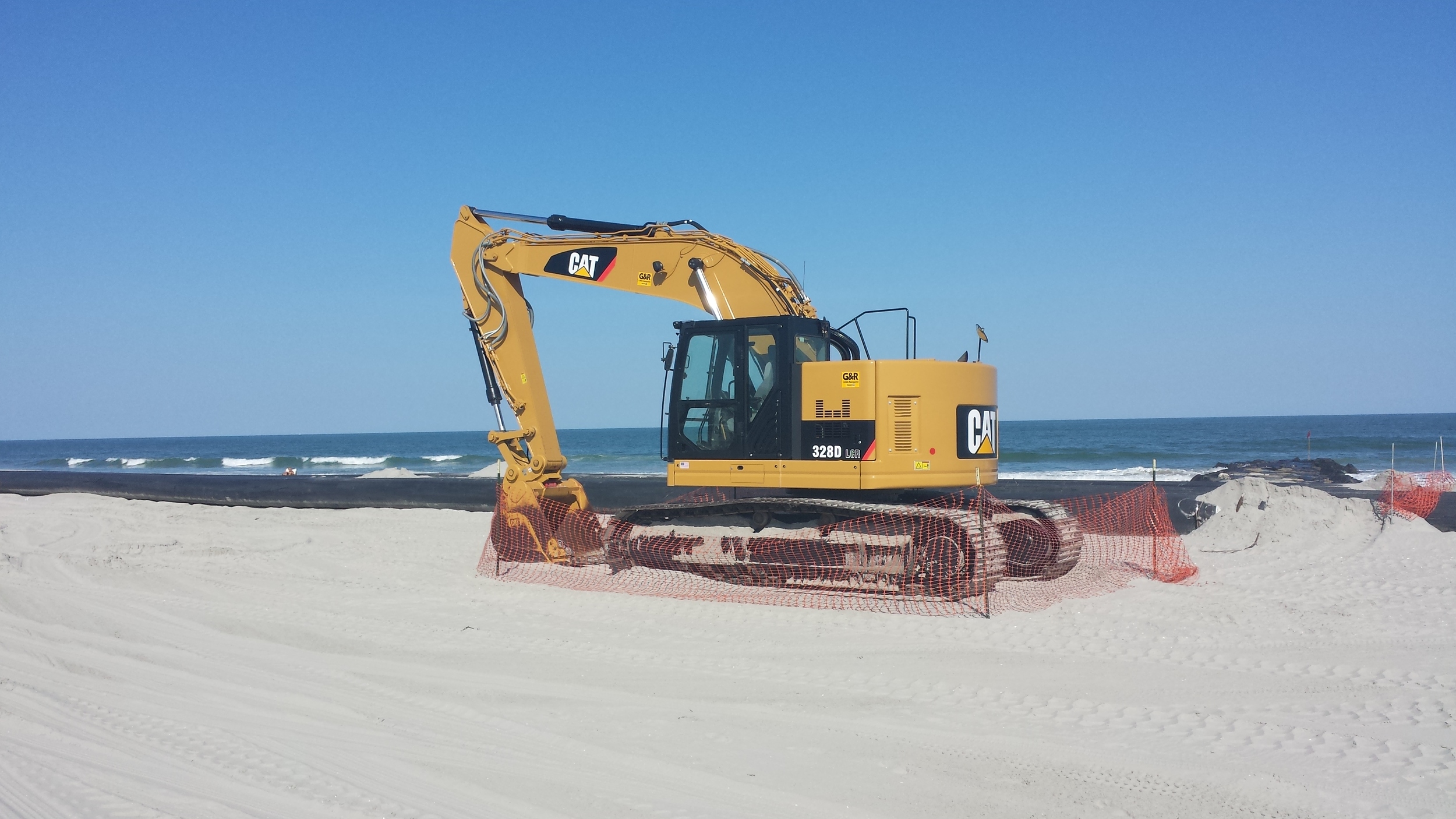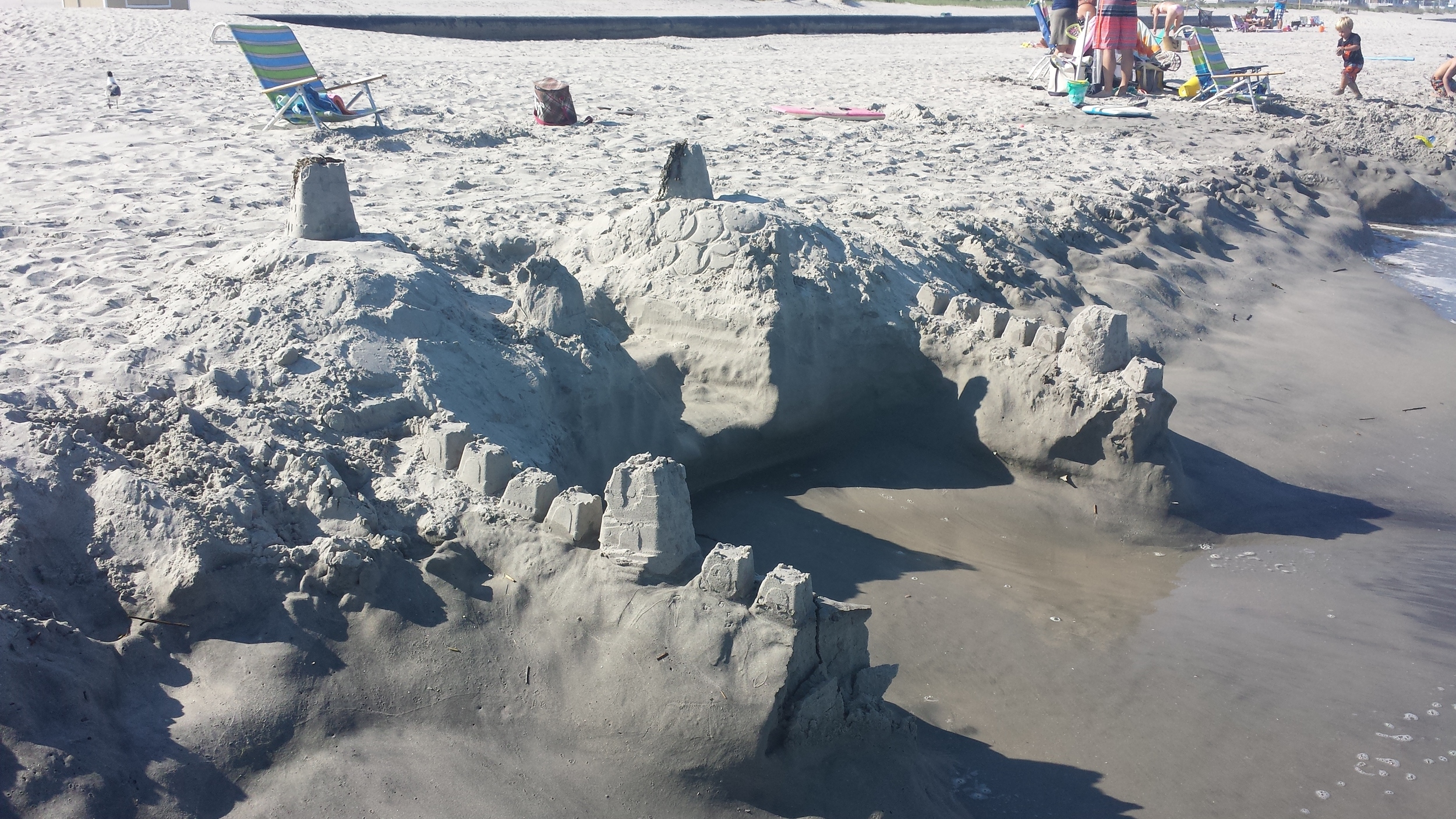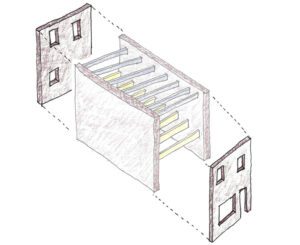I spent last week on vacation in Stone Harbor, NJ. Sitting on the beach and observing the results of Hurricane Sandy’s power–and the Borough’s reaction to it–got me thinking. How do we choose when to fight the inevitability of nature? Who should pay for it? When, if ever, do we admit defeat and treat our coastline as a fluid, rather than rigid, boundary?
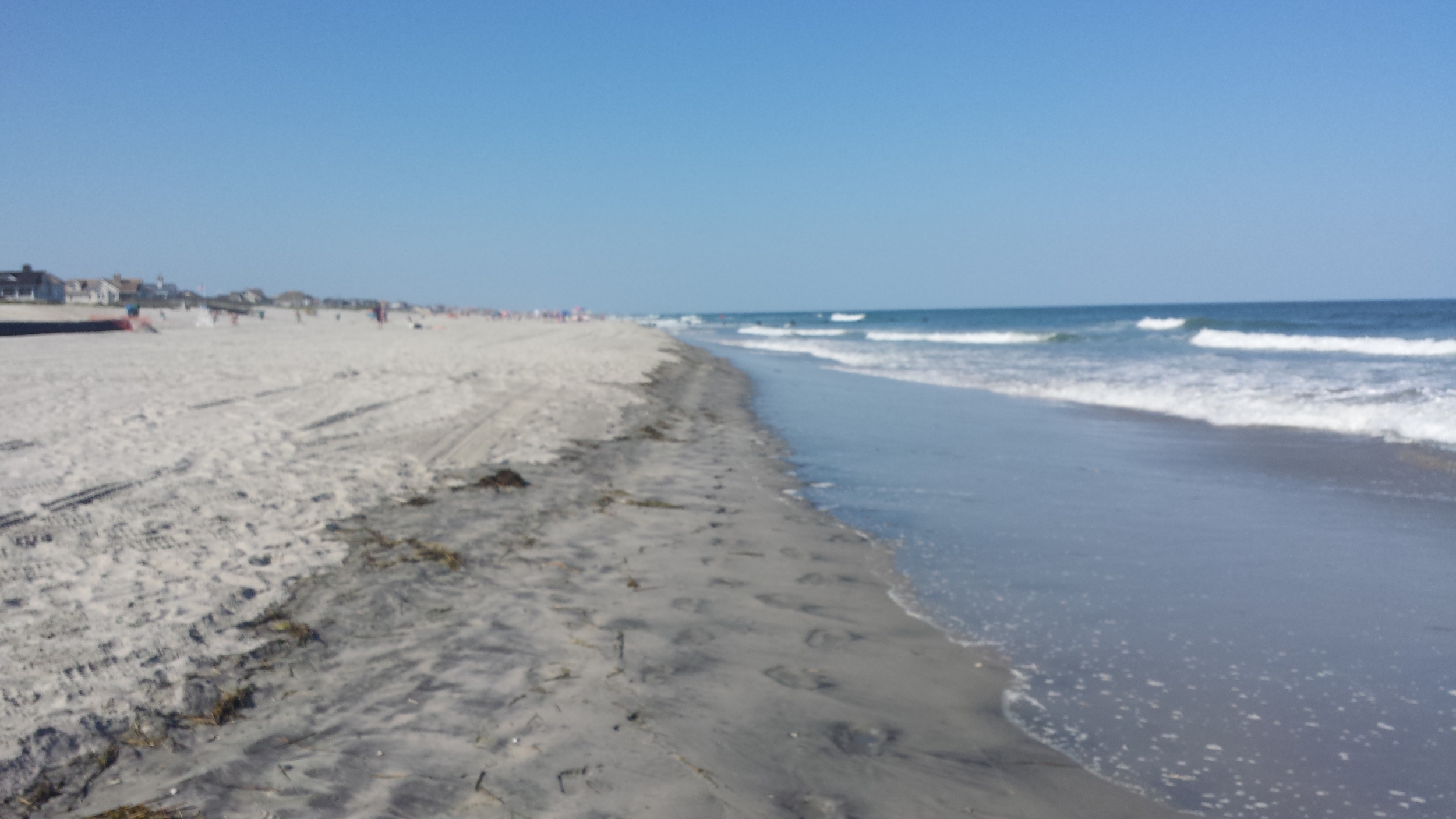
As you can see in the photo above, the water has really scoured the beach, causing almost cliff-like conditions at the high-water line. Higher up on the beach, the large and well-established dunes were eaten away by the hurricane. It’s fortunate for property owners on the island that these dunes have been the subject of a lot of focus in recent years.
Natural dunes often occur in a double-humped configuration. That is, there are two rows of dunes running parallel to the beach. Because of this, four distinct microclimates are created; the primary (outer) dune facing the beach, the back of that dune, the outer face of the secondary (inner) dune, and the back of that dune. Dunes serve many purposes. They create several microclimates where different flora and fauna live. In the photo below, you can see how the sides of the dunes facing the ocean have more grasses, while the back side has larger plants. If these dunes are allowed to progress naturally, larger vegetation, including trees, will develop as you move away from the ocean. This is determined by how much wind, blowing sand, and salt spray each area is subjected to. (For a more thorough description of this process and a list of the plant species involved, see Ian McHarg’s Design With Nature, in the chapter entitled “Sea and Survival”.)
When I was a kid, there were almost no dunes. Over the past several years, the towns along this stretch of the coast have been developing dune projects, putting in snow fencing to trap sand and planting grasses to hold it in place. As the wind blows more sand onto the dunes, the grasses extend their roots, creating a dense mat that grips the sand. It is this network of roots that held most of the dune mass in place during the storm. The dunes were able to absorb most of the power of the storm, and kept the sea back (mostly), reducing the storm damage to flooding, but not destruction.
Now, the beach is being rebuilt. The dredging barge has moved in, and large equipment stands at the ready on the sand. The barge will suck sand from offshore and blow it, along with whatever else is down there, through a three-foot-wide pipe up onto shore. The sand will be spread into place and will bring the beach back to where it was the last time this process was done (three years ago, I think). The total sand to be moved will be about 700,000 cubic yards, or the equivalent of 46,667 standard dump-truck loads.
Fortunately for local property owners, the beach fill project is entirely funded with Sandy relief money, costing the Borough nothing. But it begs the question: Who should be paying for this beach reclamation, and should they get a vote? There are strong arguments on both sides. On the one hand, the Jersey Shore is a vacation destination, filled with memories for those who go there. On the other, the vast majority of the homes on these islands are second homes, so why should the government pay to keep them safe?
This isn’t just a problem that occurs after major storms. The islands along this part of the coast are barrier islands, made of sand and, in their natural state, constantly forming, changing, and reforming. It’s only been in the last hundred years or so that people have decided to “stabilize” them, putting up barriers to the sea and periodically taking sand that has drifted away and putting it back.
I don’t have any clever answers here, but it’s food for thought. In the wake of the storm, there’s been plenty written about why we need to replenish these beaches and rebuild. There are also articles like this one (written in 2004), questioning whether it should be the federal government that foots the bill. Fortunately, in the case of this storm it seems like people were generally able to put these argument aside and help those in need of immediate assistance.
As Jimi Hendrix said, “And so castles made of sand fall in the sea, eventually”.
If you’d like to keep up with the dredging progress, you can do so here.
If you want to be part of the larger discussion, Philadelphia’s own WHYY is hosting a series on it entitled “Ready For Next Time? Rethinking the Jersey Shore After Sandy”. Read more and see a schedule of events, starting July 15th, here.

